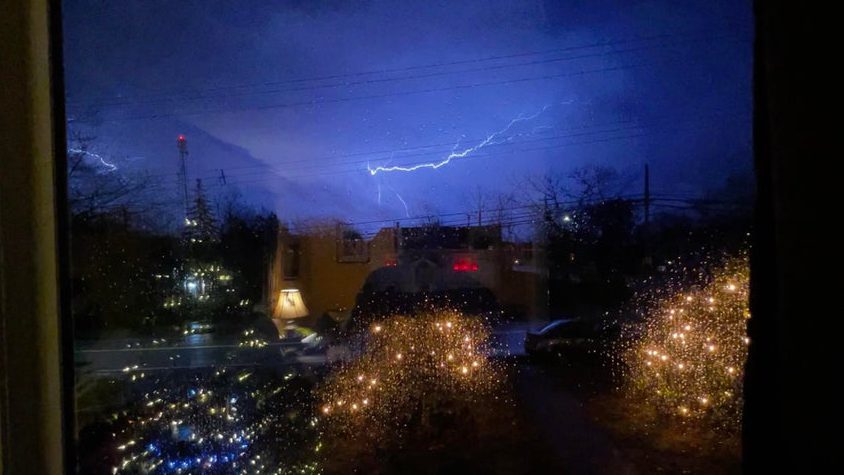Lightning storms in December a new normal, meteorologist says
Warmer weather due to climate change will mean more late season storms for Nova Scotia

caption
Yaro MacHardy captured this picture of the lightning while he was out on his porch in Spryfield on the night of Dec. 6, 2021.This week’s lightning storm was a hint of what’s to come, one meteorologist says.
Cindy Day, who has been a meteorologist with CTV and SaltWire Network, said that warming temperatures are causing thunderstorms to occur later in the season.
“A couple of decades ago they were September, October thunderstorms in that transition. Now that transition is not happening till the early part of December,” Day said.
From the night of Dec. 6 to the early on the morning of Dec. 7, people in the Halifax region got what Day called an “impressive” thunderstorm.
At the storm’s peak, there were more than 25,000 power outages in Nova Scotia.
Day said that at one point, at 3:30 a.m., there were “four huge flashes of lightning in less than two minutes … That was a very impressive high-energy line of thunderstorms that came through.”
Yaro MacHardy captured some spectacular lightning in a photo while on his porch in Spryfield admiring his Christmas lights.
“I also enjoy rain more than snow, so experiencing weather like we had last night in December is an amazing experience,” he said in a Reddit chat.
⚡A snapshot of the lightning strike distribution from last night’s storm. Each “ +,-,x ” on this map represents a lightning strike that was detected by the Canadian Lightning Detection Network. #nsstormhttps://t.co/S5tm867o6l pic.twitter.com/zkJmimtlsm
— ECCC Weather Nova Scotia (@ECCCWeatherNS) December 7, 2021
Ian Hubbard is a meteorologist with Environment Canada who specializes in short-term weather phenomena. He said Dec. 6 had all the right ingredients for a lightning storm.
“Basically, we have the warm air, we have a lot of moisture, and we have a lot of instability. And that cold front kind of acts as a trigger that helps really set things off and makes things kind of light up.”
This has certainly been a year for warm air.
Hubbard said temperatures in the Halifax and Sydney areas were between 1.1 and 1.8 degrees warmer than average for the month. This October, temperatures in the province were from 1.9 to 2.8 degrees warmer than normal.
Day said warm temperatures have a direct impact on storms.
She said thunderstorms are typical in fall, as cold fronts take over mild summer air. With climate change, though, there is more heat in the ocean water, leading to warmer temperatures on the coast. This means the transition between seasons gets pushed back and we get more late season storms.
“If you talk to people, especially those people who are a lot older that spent their entire life here, they’ll say that 30, 40 years ago, there was snow on the ground at Halloween and it stayed,” she said.
“Now our snow doesn’t come and stay until after Christmas.”
Day said that in the long range, Nova Scotians will see the weather change more quickly and storms get more intense.
“When it snows, we’re going to have a huge snow blizzard event. When there’s thunderstorms, they’ll linger longer with flash flooding because of the intensity of the rain,” she said.
Environment Canada says that if you are caught in a lightning storm, the best way to stay safe is to seek out the nearest sturdy building or metal roofed car.
About the author

Sarah Krymalowski
Sarah Krymalowski is a journalist with The Signal. She has a bachelors degree of Arts & Science from McMaster University where she studied...
